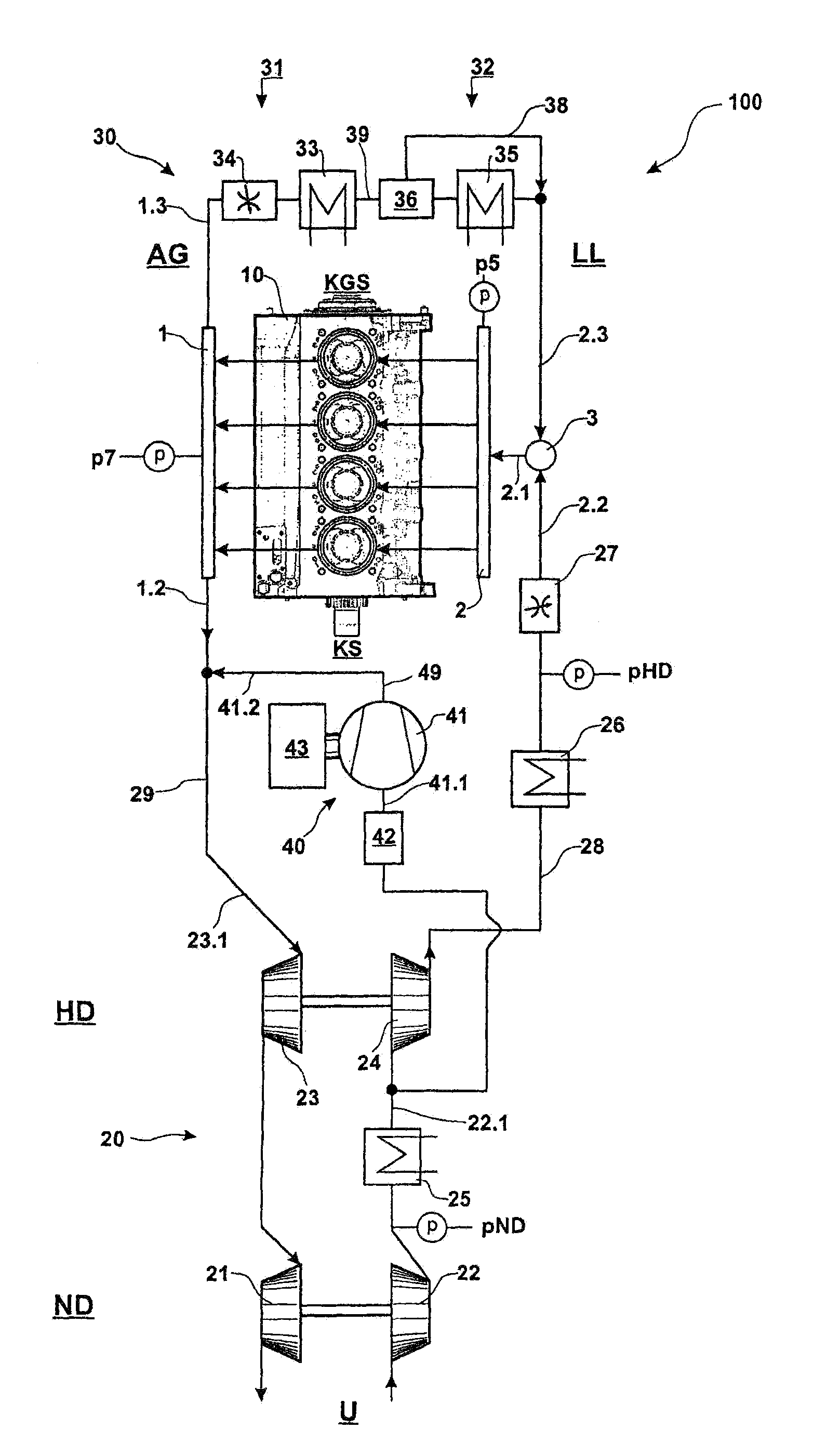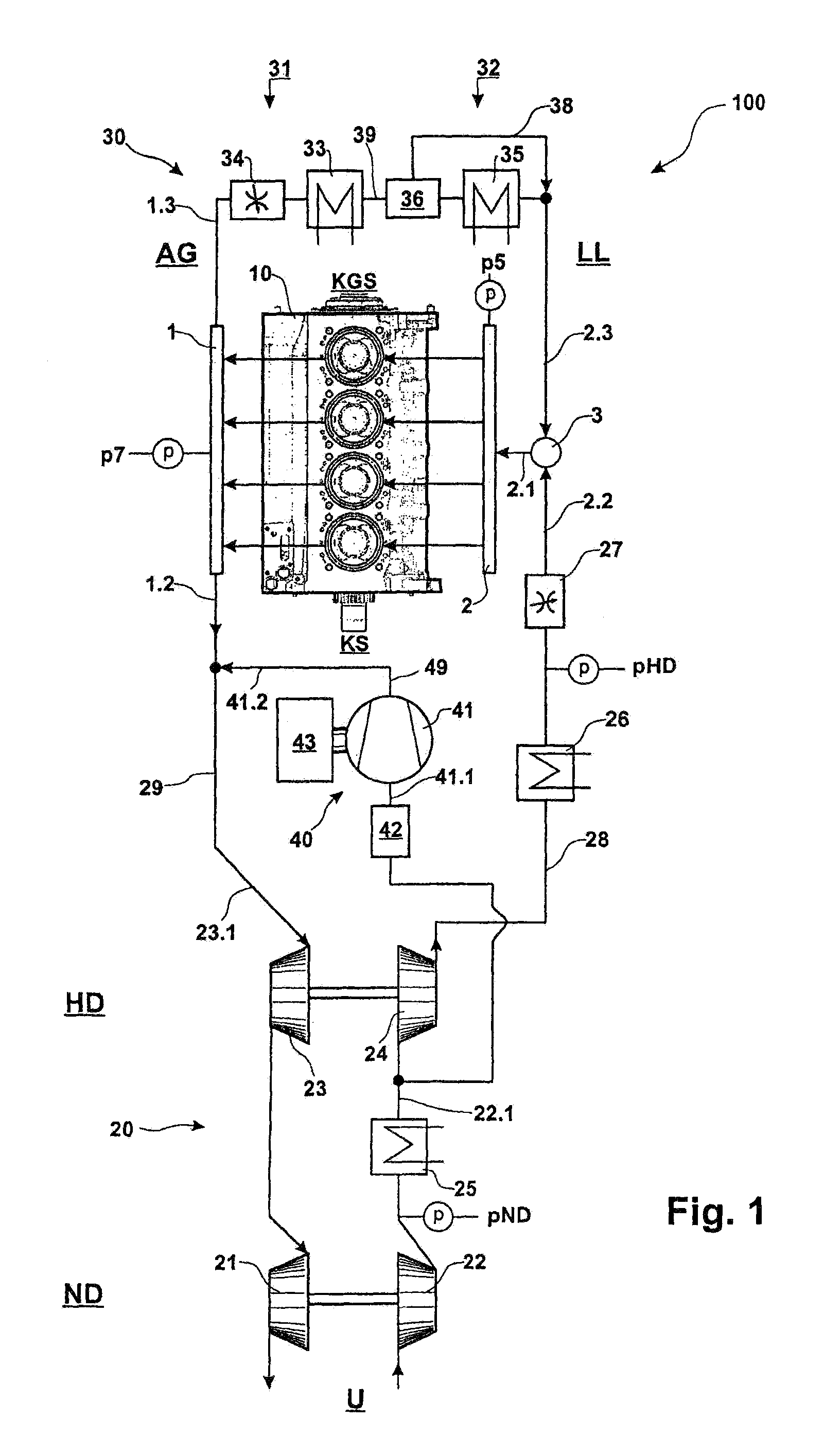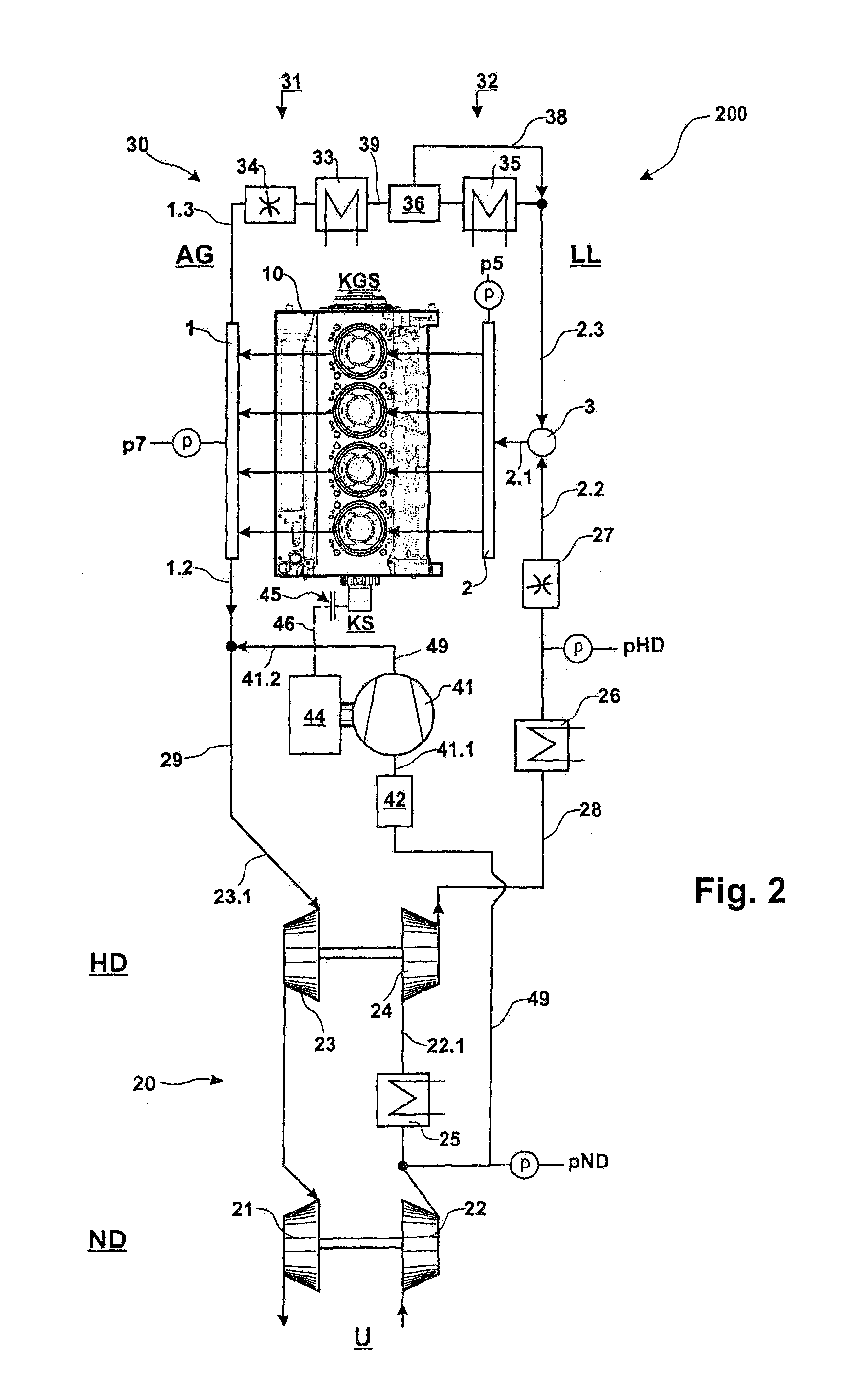Internal combustion engine
a combustion engine and combustion chamber technology, applied in the direction of engine components, mechanical equipment, exhaust gas recirculation, etc., can solve the problems of deteriorating the acceleration behavior of a vehicle provided with such an engine, affecting the performance of the engine, and the gas recirculation rate cannot always be maintained as desired, so as to improve the density of the charging fluid, reduce the nox emission, and improve the combustion efficiency
- Summary
- Abstract
- Description
- Claims
- Application Information
AI Technical Summary
Benefits of technology
Problems solved by technology
Method used
Image
Examples
Embodiment Construction
[0023]FIG. 1 shows an internal combustion engine 100 with an engine 10 and a charging system comprising an exhaust gas turbocharger 20 and an exhaust gas recirculation system 30. The engine 10 is shown, in the form, of a four-cylinder inline engine as a fast running engine operating at speeds in the range of 800 to 2500 rpm. The engine 10 has an exhaust gas side AG for conducting exhaust gas from the exhaust gas manifold 1 of the engine 10 via an exhaust line 1.2 to the exhaust gas turbocharger 20 and an exhaust gas recirculation line 1.3 extending between the exhaust gas manifold 1 and the exhaust gas recirculation system 30. The engine also includes a charging fluid side LL for charging the engine 10 with a charging fluid via a charging fluid intake manifold 2. The charging fluid in the intake manifold 2 is here a mixture of charge air supplied via a charge air line 2.2 from the exhaust gas turbocharger 20 and exhaust gas supplied via a recirculation line 2.3 from the exhaust gas ...
PUM
 Login to View More
Login to View More Abstract
Description
Claims
Application Information
 Login to View More
Login to View More - R&D
- Intellectual Property
- Life Sciences
- Materials
- Tech Scout
- Unparalleled Data Quality
- Higher Quality Content
- 60% Fewer Hallucinations
Browse by: Latest US Patents, China's latest patents, Technical Efficacy Thesaurus, Application Domain, Technology Topic, Popular Technical Reports.
© 2025 PatSnap. All rights reserved.Legal|Privacy policy|Modern Slavery Act Transparency Statement|Sitemap|About US| Contact US: help@patsnap.com



